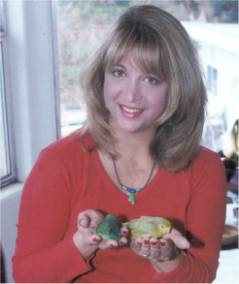I got my March Bird Talk and read your article on parrotlets. I find it very interesting. Do you have any “clean greens” available? I have a question about “clean greens”. I have a couple of pairs. One pair have given me all greens every clutch. The last clutch they hatched out one green and three yellows. I was wondering if you have ever had this happen? If so why are they not green? I talked to the breeder and she assured me that she can go back five generations of “clean greens”.
Answer:
Thank you for your email. Thank you for the email and the compliment on the Bird Talk article.
I have to clarify the term ‘clean green’ you mean birds that have no color mutation genes and cannot produce anything but normal green parrotlets? If so, the birds are referred to as 'wild-type' or 'normal' parrotlets. These are biologically-recognized terms and should be the ones used so that no misunderstandings or miscommunications can arise.
Since dilutes (yellows) are recessive birds, the answer to this question is very simple - the birds are not normal but are split to dilute. There is no other answer. I realize that the breeder may have produced five generations of these parrotlets but unless they have kept the original imported wild-caught stock (which importation was cut off in 1992) no one knows what is in their background prior to the five generations. I am sure according to the breeder’s records and breeding, the ones produced looked "normal" but obviously they were not. It can be safely assumed the mutation line was bred into the parrotlets before the breeder got the birds.
When the first mutations were imported back in the mid 1990’s, breeders had no idea what were in the parrotlets’ genetic backgrounds. Cinnamons were produced by blues, albinos came from lutinos and recessive pied appeared in fallows.
Unfortunately, unless one can trace back a particular parrotlet’s lineage back to the original, wild-caught bird, there is no way of strictly guaranteeing an accurate pedigree in Pacific parrotlets.
Subscribe to:
Post Comments (Atom)




No comments:
Post a Comment
Note: Only a member of this blog may post a comment.